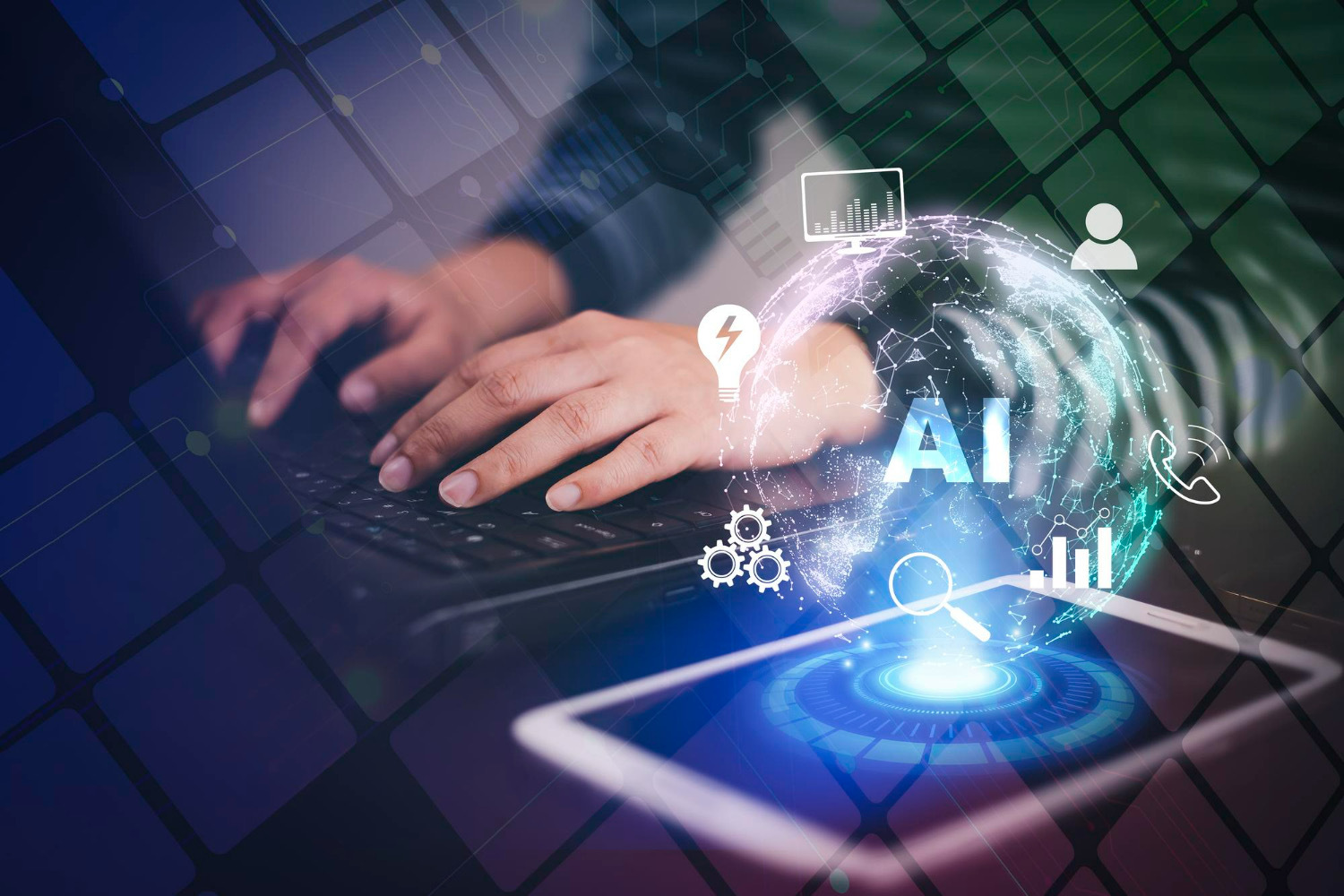The article offers a comprehensive guide, from understanding the basics of generative AI to implementing change management models and strategies, ensuring organizations are equipped to thrive in this AI-driven era.
Something big is happening quietly: the rise of generative artificial intelligence (AI).Imagine big companies using AI insights to improve how they work, or small startups using AI to come up with groundbreaking ideas. This isn’t just about fancy technology; it’s a crucial shift that’s changing how organizations operate in this AI age
But, as with any big change, there are challenges. Businesses diving into generative AI need to do more than just adopt new technology. They have to understand how people work, how organizations function, and how to manage these changes effectively.
This article is about the crossroads of generative AI and change management in businesses. From breaking down the basics of generative AI to exploring the ins and outs of making change work, we will help guide businesses in mastering the integration of generative AI.
Understanding Generative AI: Basics to Business Impact
Generative AI, at its core, is capable of creating a vast array of original content, from text to images, and even music. Unlike traditional AI, which mainly analyzes and interprets data, generative AI takes it a step further by producing new, unique outputs based on its training and inputs. Imagine teaching an artist various styles and techniques. Once trained, this artist can then create its own unique paintings, not just replicate what they have seen before.
Now take generative AI into the business world. It behaves like a multi-talented intern who can adapt and perform a variety of tasks. For instance, in marketing, it’s used to generate creative ad content or invent novel product ideas. In customer service, it can create personalized email responses or chat interactions, enhancing customer experience. A recent study highlighted how a retail company used generative AI to create personalized shopping experiences, significantly boosting customer engagement and sales.
The healthcare sector has also seen impactful applications. Researchers have used generative AI to develop new drug formulations, potentially accelerating the path to new treatments. Another case is in content creation, where news agencies use AI to draft basic news articles, allowing human journalists to focus on more in-depth reporting.
These applications demonstrate how generative AI is not just a futuristic concept but a present-day tool transforming various industries. Its ability to learn, adapt, and create makes it a valuable asset today.
The Essential Role of Change Management in AI Adoption
Integrating generative AI into organizational processes is not just a technological upgrade but a significant change in how businesses operate. This transition often encounters various challenges and resistance. A survey by McKinsey & Company revealed that one of the biggest hurdles in AI adoption is not the technology itself but maturity, focusing on model performance and retraining. In contrast, others
struggle with basic strategy, like defining an AI vision and securing resources.
The criticality of effective change management in successful technology adoption cannot be overstated. A study in the Harvard Business Review highlighted that projects with excellent change management were more likely to meet objectives than those with poor change management. This underlines the importance of addressing human factors and organizational dynamics in the AI adoption process.
Strategic Frameworks for Effective Change Management
One of the most respected models in change management is the ADKAR model, which stands for Awareness, Desire, Knowledge, Ability, and Reinforcement. In the context of AI integration, this model can guide organizations in systematically managing the transition. For instance, a multinational corporation used the ADKAR model to smoothly transition to an AI-driven data analysis system. They started by creating awareness about the benefits of AI, then fostered a desire for change through leadership and stakeholder engagement.
Another effective framework is Kotter’s 8-Step Process. This model starts with creating a sense of urgency around the need for change. A tech company successfully applied Kotter’s model in its AI adoption strategy by first highlighting the competitive advantages of AI in their industry to garner support.
Leadership plays a crucial role in navigating this change. Leaders must not only be advocates of the new technology but also empathetic to employees’ concerns. Transparent communication is key to demystifying AI and addressing fears related to job security and the nature of work. Organizational psychology research emphasizes the importance of an AI-adaptive culture where continuous learning and flexibility are valued. This cultural shift can be facilitated by providing ample training opportunities and showcasing how AI can augment human capabilities rather than replace them.
Some more models are as follows:
- Lewin’sChange Management Model: Developed by psychologist Kurt Lewin, this model comprises three main stages: Unfreeze,Change, and Refreeze. It begins with preparing the organization for change (Unfreeze), implementing the change (Change),and then solidifying the change as part of the culture (Refreeze). For example, when introducing generative AI systems, an organization first needs to unfreeze its current state by challenging existing processes and mindsets. Following the implementation of AI tools, the new method is refrozen into the company’s culture through reinforcement and support
- Bridges’Transition Model: This model focuses on the transition rather than the change itself. It outlines three stages: Ending, Losing,and Letting Go; the Neutral Zone; and the New Beginning.This approach can be particularly effective when employees are hesitant about AI adoption. It starts by addressing the losses and uncertainties (Ending, Losing, and Letting Go),moves through a transitional phase where the organization adapts to new processes (the Neutral Zone), and finally embraces the new state (New Beginning).
- McKinsey 7-S Model: This model involves seven factors: strategy,structure, systems, shared values, skills, style, and staff. It’s a holistic approach to change, ensuring that all aspects of the organization are aligned with the new direction. When integrating AI, the model suggests that the organization should align its strategy (how AI fits into the overall business objectives), structure (how teams and units are organized), systems (processes and tools), shared values (culture and core values), skills (capabilities needed to use AI effectively), style (leadership approach), and staff (talent and roles) to the new technology.
- The 5 P’s Model of Pryor, White, and Toombs: This model focuses on Purpose, Philosophy, Processes, People, and Payoffs. It’s particularly useful for aligning AI initiatives with the overall purpose and philosophy of the organization. For instance, a company might align its AI strategy with its purpose (business objectives), philosophy (ethical use of AI), processes (how AI is implemented and used), people (engaging and training employees), and payoffs (benefits and outcomes of AI integration).
By understanding and applying these change management strategies, organizations can navigate the complex journey of AI integration more effectively, ensuring that both the technological and human aspects are harmoniously aligned.
Strategies for Effective Change Management in AI Integration
- Clear Vision and Objectives: Establish a clear vision of what the AI integration aims to achieve. Communicate this vision effectively across the organization to align everyone’s understanding and expectations.
- Stakeholder Engagement: Identify and engage key stakeholders early in the process. Understanding their concerns and expectations can help in tailoring the change management approach to suit different groups within theorganization.
- Tailored Communication Plan: Develop a communication plan that addresses the needs of different segments of the workforce. This includes regular updates, feedback mechanisms, and transparent discussions about AI’s impact on various roles.
- Employee Involvement and Participation: Involve employees in the AI integration process. This can be through pilot projects, feedback sessions, or committees. Participation helps in reducing resistance and increases a sense of ownership among staff.
- Training and Education: Offer comprehensive training and education programs to help employees understand and adapt to AI technologies. This should cover not just the technical aspects, but also the implications for their specific roles and workflows.
- Pilot Programs and Phased Rollout: Start with pilot programs to test and refine the AI integration process. This allows for adjustments based on real-world feedback before a full-scale rollout.
- Support Systems: Provide support systems such as help desks, user manuals, and peer support groups. These resources help employees feel supported as they navigate the new systems and processes.
- Monitoring and Feedback Loop: Continuously monitor the progress and impact of AI integration. Establish feedback mechanisms to gather insights from employees, which can be used to make ongoing adjustments.
- Leadership Involvement and Support: Ensure that the leadership team is visibly involved and supportive. Their commitment is crucial for driving change and motivating the workforce.
- Ethical and Responsible AI Use: Address ethical concerns and promote responsible AI use. This includes ensuring that AI integration aligns with the organization’s values and societal norms.
Building an AI-Ready Workforce
In preparing employees for an AI-driven future, organizations must invest in strategic upskilling and reskilling initiatives. Successful corporate training programs, such as those implemented by tech giants like Google and Microsoft, showcase the effectiveness of hands-on learning experiences. Collaborative partnerships with educational institutions further amplify these efforts, providing employees with specialized courses and certifications. Continuous learning and development play a pivotal role, ensuring that employees remain agile in an ever-evolving AI circle. This involves fostering a culture of curiosity and adaptability, encouraging employees to embrace ongoing education as a cornerstone of their professional growth
Conclusion
In summarizing the key takeaways from the journey of AI integration, it’s evident that success hinges on a delicate balance between technological advancement and human insight. Navigating change management in this landscape requires a holistic approach, encompassing strategic frameworks, workforce readiness, and ethical considerations. As organizations leverage the power of AI, the role of human insight becomes paramount. It’s not just about adopting technology; it’s about leveraging AI as a tool for organizational growth, innovation, and, most importantly, as a catalyst for empowering individuals to thrive in the workplace of the future. In this blend of technology and humanity, lies the true potential of AI integration in the organizational fabric.









